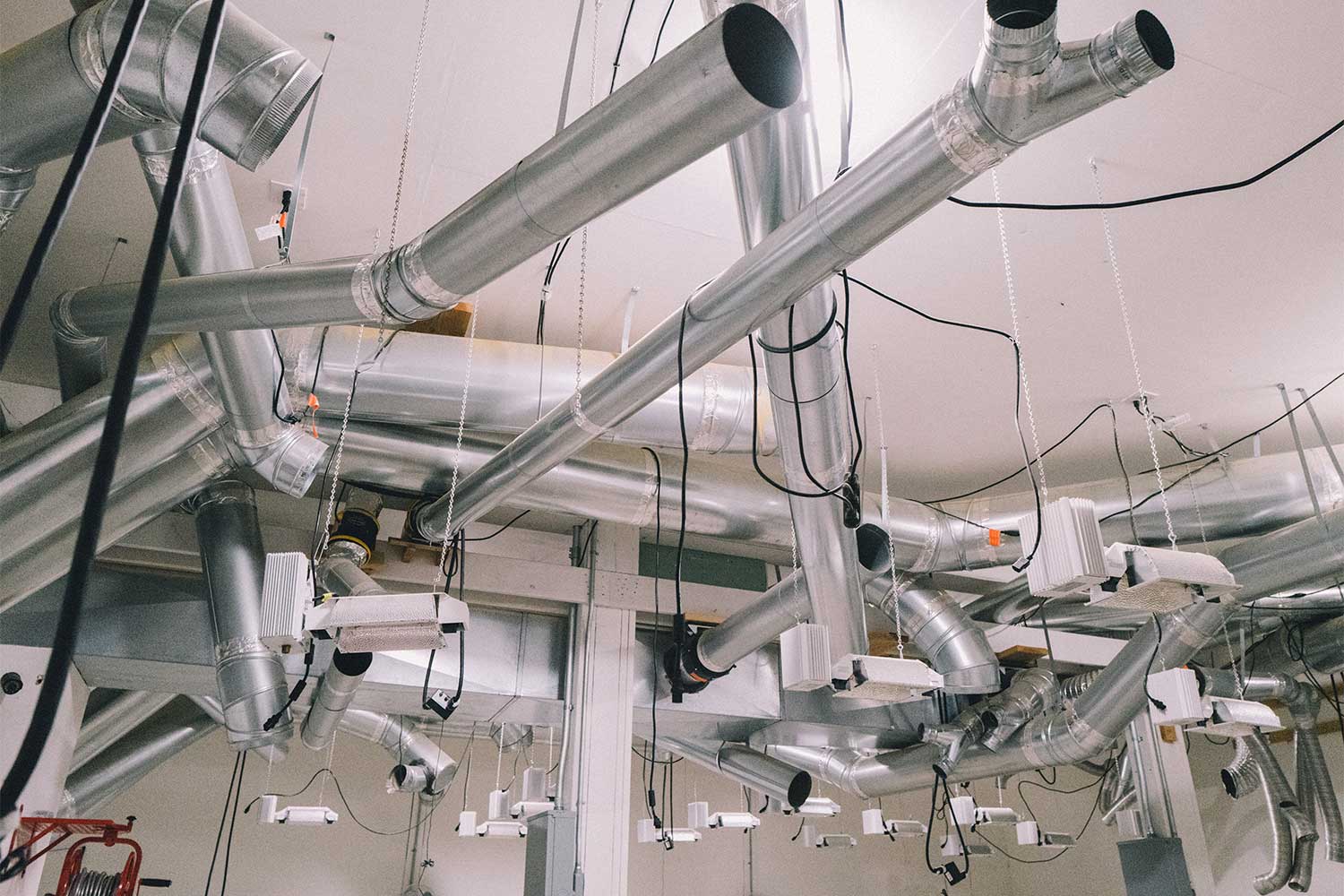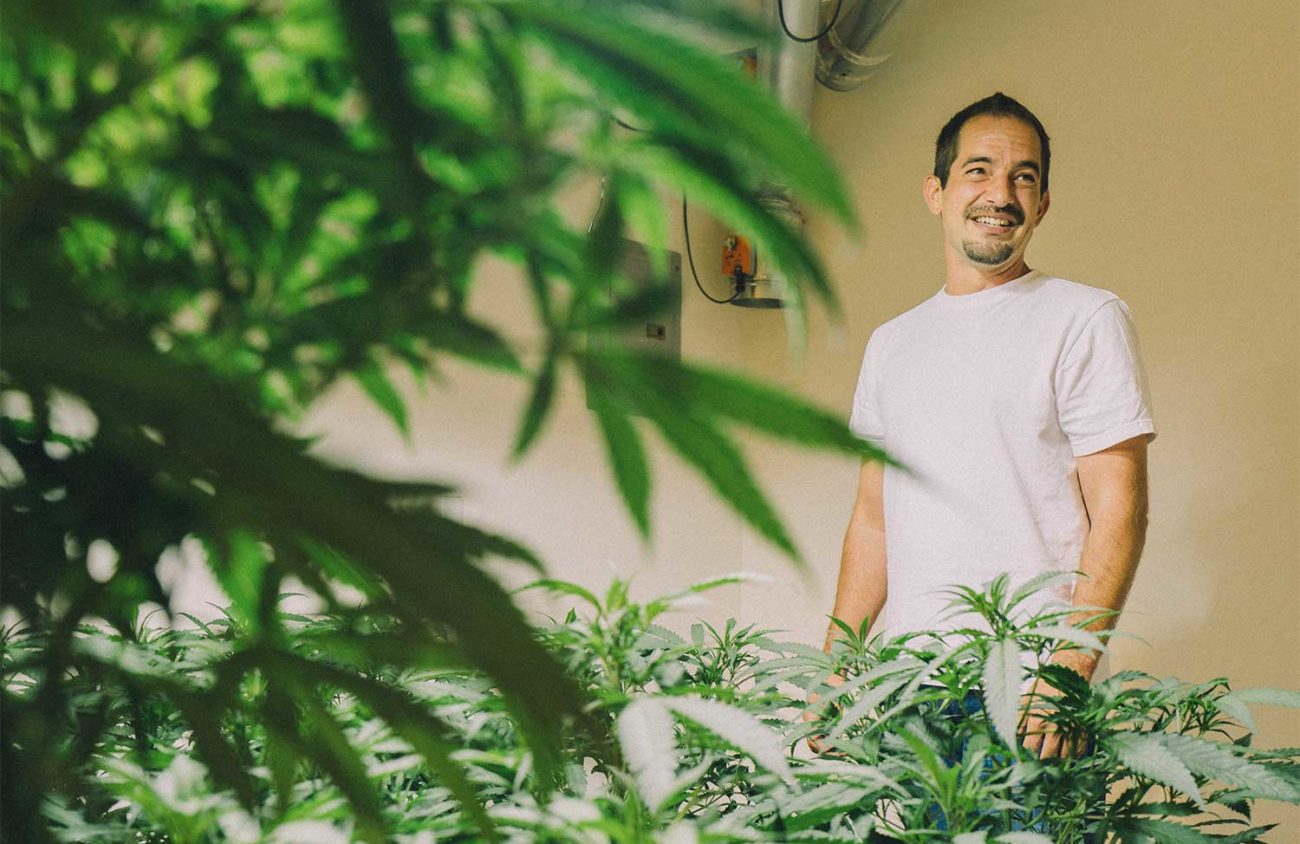Off a major road leading to Creswell, camouflaged in a world of ranch houses and rural agriculture land, is a tall nondescript building. Driving by, it could appear to be a barn, a garage or some dormitory for a cult.
But the last thing you’d imagine is an elaborate greenhouse that could shake the cannabis world.
On the rural Lane County property, owners of Creswell Oreganics, Trent Hancock and Shayney Norick, are following methods pioneered by Eugene growers of the ’90s. Rather than relying on a chemical approach, Hancock says he’s adopted ventilation techniques that have been passed down and that he’s improved upon to mimic mountain-like climates where weed naturally grows best, so he can avoid pest management and pesticides.
The greenhouse yields enough cannabis to keep a retail dispensary stocked with what’s called flower (the bud that is typically smoked). And the company’s goal is to open dispensaries whose stock is filled by its own grow site.
Creswell Oreganics’s growing methods produce weed that isn’t harsh and can be smoked all day, Hancock says. It’s a kind of flavorful weed that he says is similar to what was grown in Eugene 30 years ago, which made him fall in love with the plant. “They’re the reason I love cannabis,” Hancock says of the growers of the time. “Because when I was a kid, I was smoking their bud, and we were smoking bud that tasted like blueberry and strawberries.”
Hancock, a member of the Lakota tribe, grew up in Portland as well as on the Pine Ridge Reservation in South Dakota. But Hancock says he was inspired by Eugene weed growers, who he says grew the best cannabis in the Pacific Northwest. “They were bringing so much dank bud to Portland,” he says. “They’re what made Portland seem legendary because people bought their weed in Portland, but the main suppliers of the high quality weed were coming out of Eugene.”
Eugene was home to innovators like DJ Short, who would go on to discover the weed strain “DJ Short Blueberry.” If weed were a religion, Hancock adds, Eugene would be its mecca.
Since the ’90s the weed industry has turned to more science-informed approaches, Hancock says, with more growers calling themselves “master growers” to get investment money. He dismisses the use of such titles for himself and for most growers, maintaining reverence for the growers who inspired him decades ago. But he’s etching his own pathway in the cannabis industry at his Creswell property using techniques he learned from his inspirations.
Weed growing at its most basic happens in rooms or closets, a common setup when cannabis was prohibited. Whether a plant is in a closet or a full room, he says that the space is usually sealed up to avoid getting busted from the scent, but that doesn’t create any air exchange, creating the likelihood of a spoiled product.
“Fresh air is one of the biggest cleaners,” he adds. “When you seal your room up, you’re inviting mold because the moisture from your pots starts building up in the room.” That then creates bug problems, leads to pesticides and the plant can be sitting in a space filled with up to five-times the amount of carbon dioxide found in nature, he says.
Enlarge

Photo by Todd Cooper
But inside Creswell Oreganics’s unorthodox greenhouse, Hancock uses a sophisticated system of fans that create an air exchange more advanced than most growers use.
The air exchange technology was an idea that he says he had worked with his father in developing. Being involved with cannabis during prohibition, Hancock says he and his more strait-laced father had grown apart. His father was a U.S. Navy Seabee, a construction-oriented battalion of the military branch, and a firefighter. The two reconciled and his father helped him develop the automated air system.
Inside the grow room, plants sit underneath heat lamps that are hot enough to burn human skin right off, he says. To keep the room at 78 degrees Fahrenheit despite the heat radiating from the lamps requires a complex layout of pipes that could inspire a Super Mario Bros. video game level. The pipes serve to exchange air throughout the day, not only to keep the temperature steady but also push cold air during the night to kill bugs and pests.
Hancock says he’s been working on this concept for years and really began diving into it eight years ago while working at a grow site in Montana. The concept behind it is having a grow site that creates a climate of an ideal day for humans, which is what plants want, too. “It’s working with nature, not against it. And simulating nature as best as possible in the environment,” he says.
Some of the best weed — such as the Kush strain, whose origins are from mountains on the South Asian subcontinent — is grown on mountaintops, he says. Through this air exchange, his facility can mimic that climate to grow pesticide-free weed.
“If you notice in the mountains, you’ll have less bugs because the cold temperature drops at night interfere with their reproductive cycle,” he says. “I’m using temperature algorithms and very high volumes of air to prevent bugs and mold.”
In this case, mimicking nature indoors is better than growing outdoors in Oregon. He says he knows of several farmers in southern Oregon who are leaving the state because there isn’t consumer interest in outdoor-grown weed. And farms are also at a disadvantage in Oregon. One reason is because of the long days in summer, which he says some farmers try to use light deprivation techniques, such as placing a tarp over crops. That invites mold and bugs, which in turn leads to farmers using pesticides, he adds.
Pesticides are found in just about every agricultural product, and that includes cannabis. Oregon has a list of more than 500 approved pesticides, insecticides, herbicides and fungicides.
The use of pesticides in weed isn’t a new debate. A 2020 study published in the Annals of Work Exposures and Health academic journal found that from 2016 to 2017, both recreational and medicinal cannabis samples contained high levels of residual pesticides and pesticides not legally allowed on products.
Lane County’s state-licensed cannabis testing company OG Analytical closed in 2017 after Eugene Weekly published an article in 2016 that antifa groups had reported that its owners were white supremacists.
The use of pesticides in weed is a big concern for Hancock. He says pesticide-treated weed ends up in products sold in dispensaries, and when smokers take a hit of it, the chemicals and the smoke hit the bloodstream, and that can be unhealthy for consumers who are using cannabis for medical purposes.
But he and his partner Norick are looking at next steps that could provide clean, pesticide-free weed for consumers, as well as allow their business to stay healthy in a turbulent industry. The Creswell grow site produces about 70 pounds every two months, he says, which is the right amount to keep a dispensary stocked. And that’s the next step for Hancock and Norick.
Hancock says they’re looking to buy a dispensary, possibly in Bend. That will give them a company that’s vertically integrated — one that owns a grow site and stocks its dispensaries with its own flower.
“Think of it like a brewery that has its own retail location where you can only get beer from there,” Hancock says. “That’s basically what our model is gonna be throughout Oregon.”
This article has been updated.
